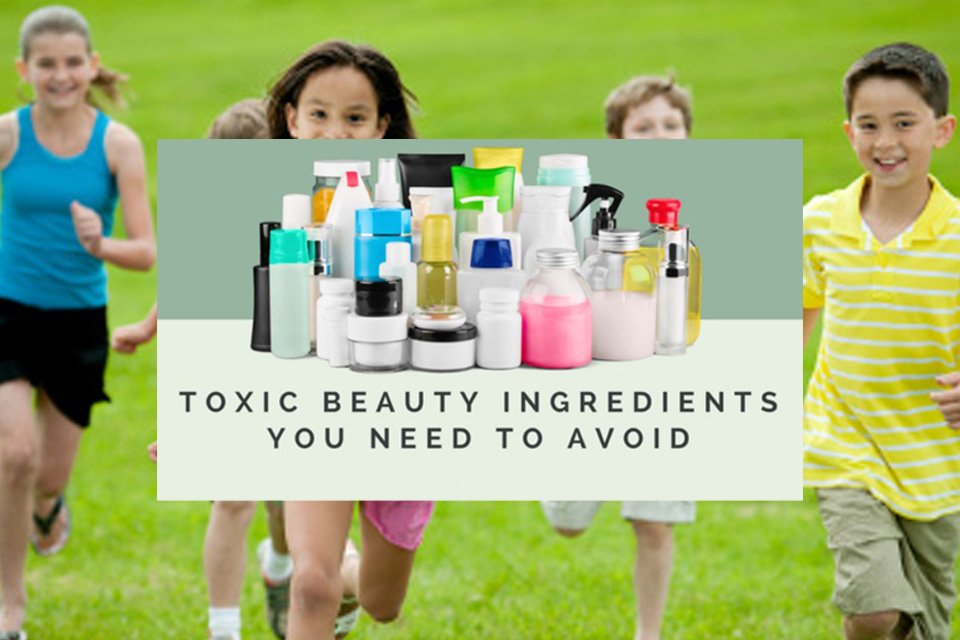US children are using toxic beauty products as cosmetics and body care products that could contain carcinogens and other poisonous chemicals, a new study has set up.
About 70 percent of parents surveyed said that their children use particulars similar as shimmer, face makeup, nail polish, lip buff and scents that are retailed for kiddies, according to the exploration, published on Tuesday in the International Journal of Environmental Research and Public Health.
similar products frequently feature bright colors, creatures and cartoon characters that serve “ to attract the attention of children, ” the authors noted.
At the same time, they advised, exploration has shown that numerous of these products contain poisons similar as lead, asbestos, phthalates, formaldehyde and per- and polyfluorinated substances( PFAS), also known as “ ever chemicals ” due to their continuity in the terrain and mortal body.

similar poisons can be particularly dangerous to babies and children, with some linked to cancer, neurodevelopmental detriment and other unrecoverable health consequences, the experimenters stressed.
A study by scientists at Columbia University Mailman School of Public Health and Earthjustice found that most children in the United States use makeup and body products that may contain carcinogens and other toxic chemicals. (Source)
“ It’s important to uncover how makeup and body products are being used by children to characterize threat and ameliorate safety, ” wrote the authors, from Columbia University’s Center for Children’s Environmental Health and the Washington, D.C. – grounded group Earthjustice.
Read Reasons why toxic beauty products are harmful.
The experimenters administered a 39- question check about kiddies ’ ornamental use via social media and by distributing pamphlets to parents and guardians of kiddies periods 12 and under.
Among the 312 children of 207 check repliers, 219 — or 70 percent — have used similar products.
Fifty- four percent of children said they used these particulars at least monthly, while 12 percent reported exercising them daily, according to the study. Twenty- two percent of kiddies said that they use the products for further than eight hours at a time.
Aged children employed the products at advanced rates than youngish kiddies, and girls used them further than boys, the experimenters set up.
The product most popular among children was face makeup with 60 percent of repliers reporting use. roughly 44 percent of the kiddies said they used hair products, while 41 percent used other facial cosmetics, 32 percent employed nail polish and 30 percent wore lip makeup, according to the study.
The experimenters also linked differences in the use of makeup and body products among children from different communities and societies.
Children of Hispanic/ Latinx parents and guardians used makeup and body products more frequently and for shorter durations than children fanon-Hispanic parents and guardians, according to the study.
“ Childhood exposure to dangerous makeup and body product constituents can also be considered an environmental justice issue, as communities of color may be more likely to use these products, ” the authors stated.
About half of all kiddies that reported using children’s makeup and body products said that they used them for play. Children from Hispanic/ Latinx families cited play as their purpose for using these products more constantly than ternion-Hispanic peers, according to the study.
kiddies from Hispanic/ Latinx homes were also more likely to use lip and hair products, as well as spices, the authors set up.
“ Marginalized communities passing distant situations of exposure, compounded by sensitive ages of exposure, represent an environmental injustice that warrants farther disquisition, ” the experimenters stated.
The authors conceded the fairly small size of their study and that oversampling through specific social networks could have passed due to chain referrals by actors — making the study less representative on a public position.
still, the check’s vacuity in multiple languages allowed for broader addition and generated results that are “ a good prolusion for future, larger- scale studies, ” the experimenters argued.
similar unborn studies, the authors added, could help “ farther address children’s use of both adult products and children’s products, as well as enterprises regarding toxin and environmental injustice. ”

